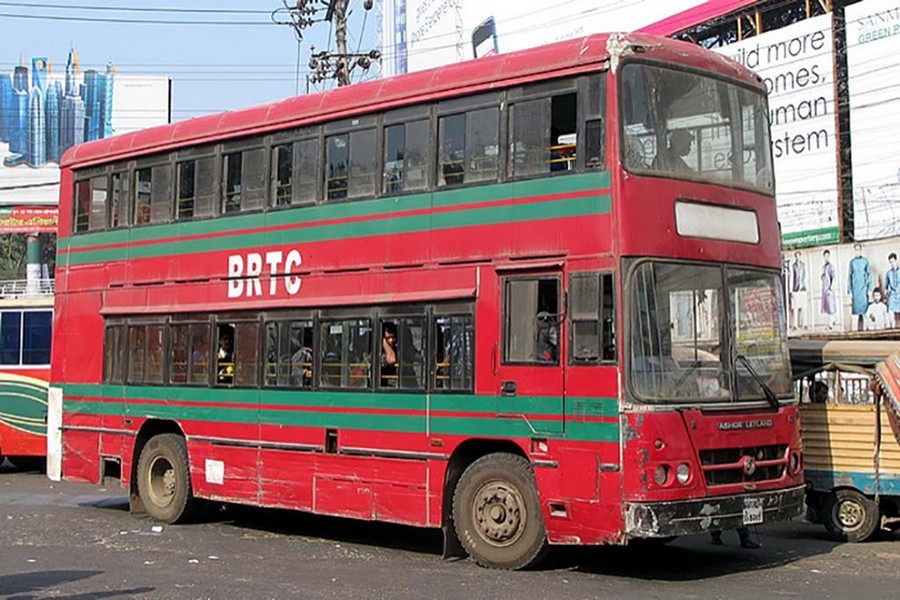
Published :
Updated :

The state-owned Bangladesh Road Transport Corporation (BRTC) is never found wanting in planning big. Once again it has unveiled its plan to improve its service by introducing compressed natural gas (CNG)-run air-conditioned (AC) buses followed by electric vehicles. The transport corporation also drew the attention of the media people gathered at its conference room to the savouring fact of profit-making by it. Evidently, since the metro rail's operation between Uttara and Motijheel, it has become somewhat incumbent upon bus operators including the BRTC to go for improvement in service in order to win over passengers. Sure enough, if commuters of other parts of the city had the option of choosing between metro rail and the lackadaisical buses and their still more unfriendly service, which of the two they would prefer needs hardly any mention.
Given the rampant corruption, abuse of assets and malpractices in the past, the BRTC has a long way to go before it regains public trust. The corporation has added 1,100 buses since 2013 to its fleet but it has only 885 of those. This time the buses were not grounded like the Volvo buses, a top brand in the world within eight years, but the Ashoka Leyland also has a life span more than the 10 years by which time 215 have become unaccountable. Also the introduction of articulated buses was a misadventure. Then the commercial consideration behind leasing out double-decker BRTC buses to universities, including private ones, and other entities defies rationality. It is exactly at this point, the profitability of the BRTC should be put under closer scrutiny. In fact, the fleet of 500 trucks that the BRTC pressed into service in 2019-20 was the basis of turning it profitable. Procured from India under its third line of credit, the trucks profitably started carrying goods for state entities with which the corporation entered into agreements for rendering the service. The buses perhaps are yet to earn any profit, if not incur losses.
Yet the current chairman of the BRTC has made a few commendable moves for the BRTC to get rid of its corruption. One of those is the transfer of employees after three years. The idea is that they must not be allowed to spread their roots and resort to irregularities and malpractices. More needs to be done to make the service attractive to commuters and also profitable. Given the rundown and disfigured private buses that add more vehicles to their fleets with profits, the BRTC service should attain both objectives if its operation becomes well regulated and commuter-friendly. The bus service on the expressway may give a false sense of satisfaction because it covers a small segment of city routes and serves a limited number of passengers.
Surely, the BRTC service at the Uttara North Metro rail station is doing well because of the consistent flow of commuters from and to the metro rail. A similar arrangement can be made for metro passengers at Agargaon and Farmgate from where the dangerous 'leguna' ply to areas not covered by buses. So far as the operation of CNG-run AC buses are concerned, they will be economically viable only if the long tailbacks can be reduced or done away with. The same is true, perhaps more true for electric vehicles. Get the city roads streamlined first, then such vehicles, if operated professionally, will be able to render services to people's satisfaction.


 For all latest news, follow The Financial Express Google News channel.
For all latest news, follow The Financial Express Google News channel.